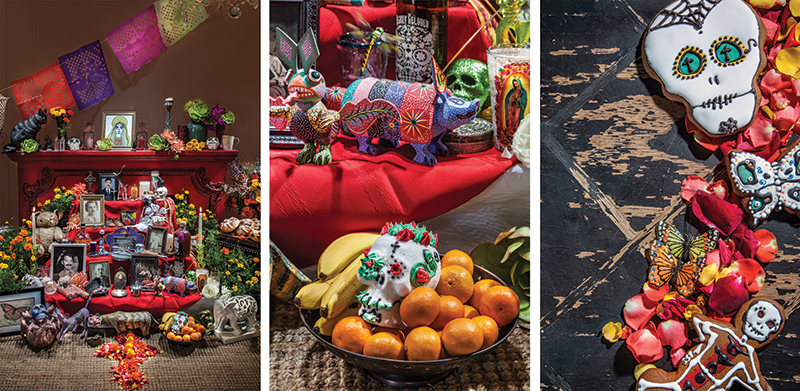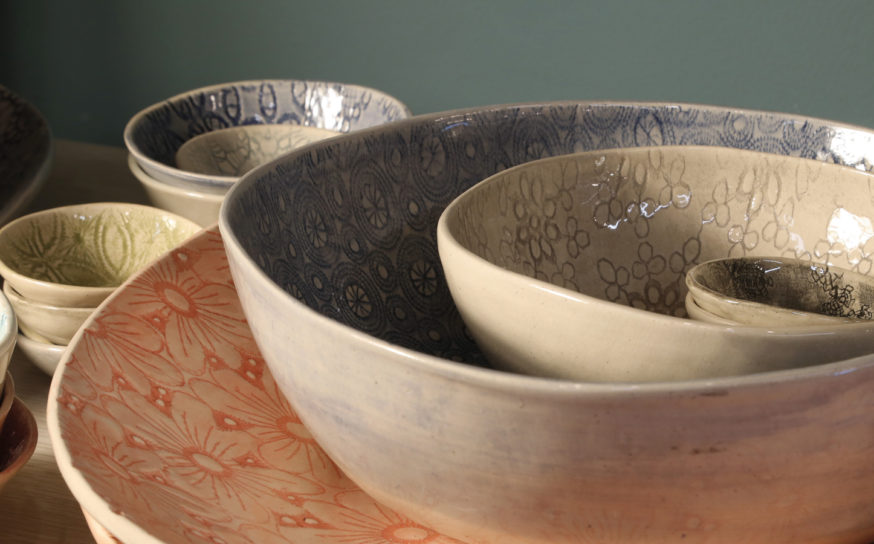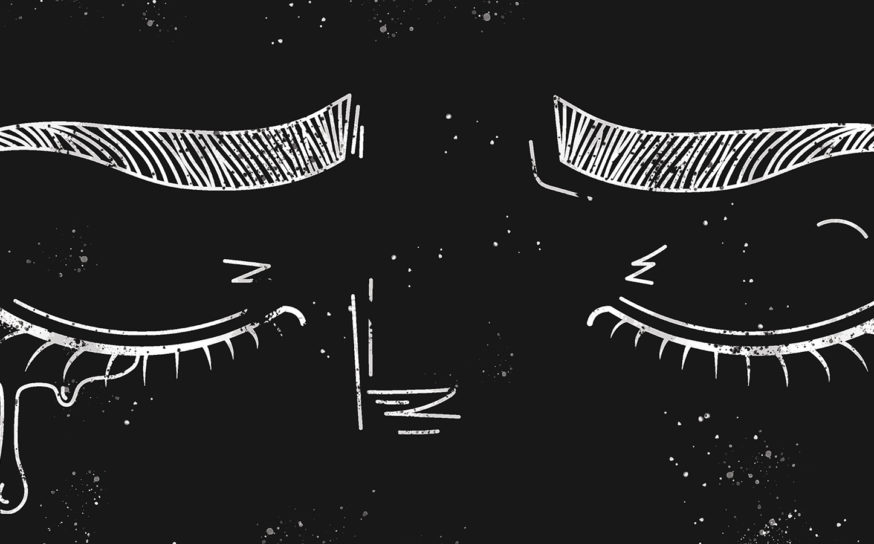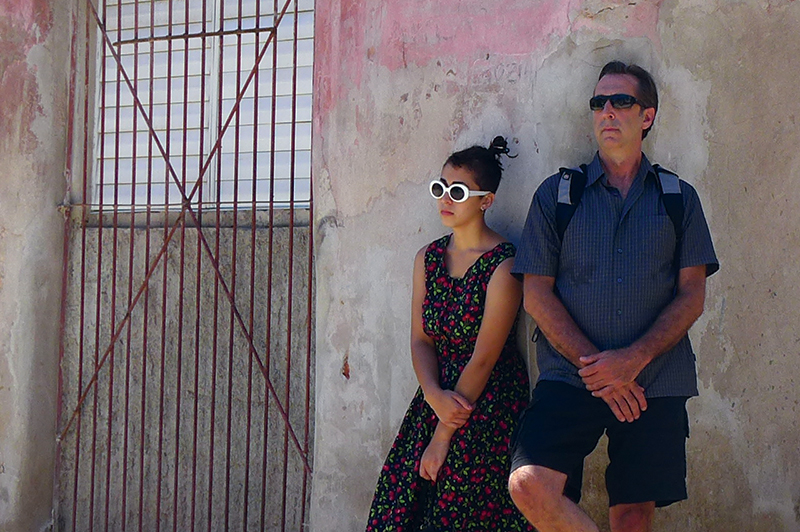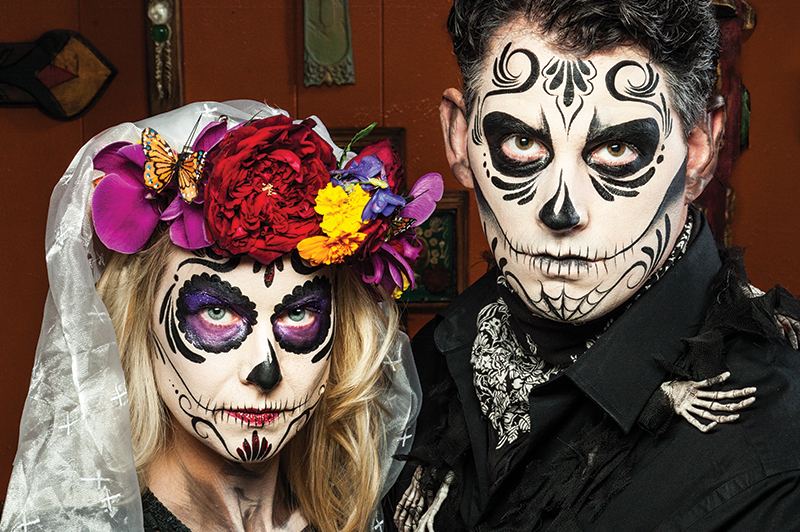
Dia de los Muertos
From traditions to food to flowers—a close-up look at the celebrated Mexican holiday
-
CategoryPeople
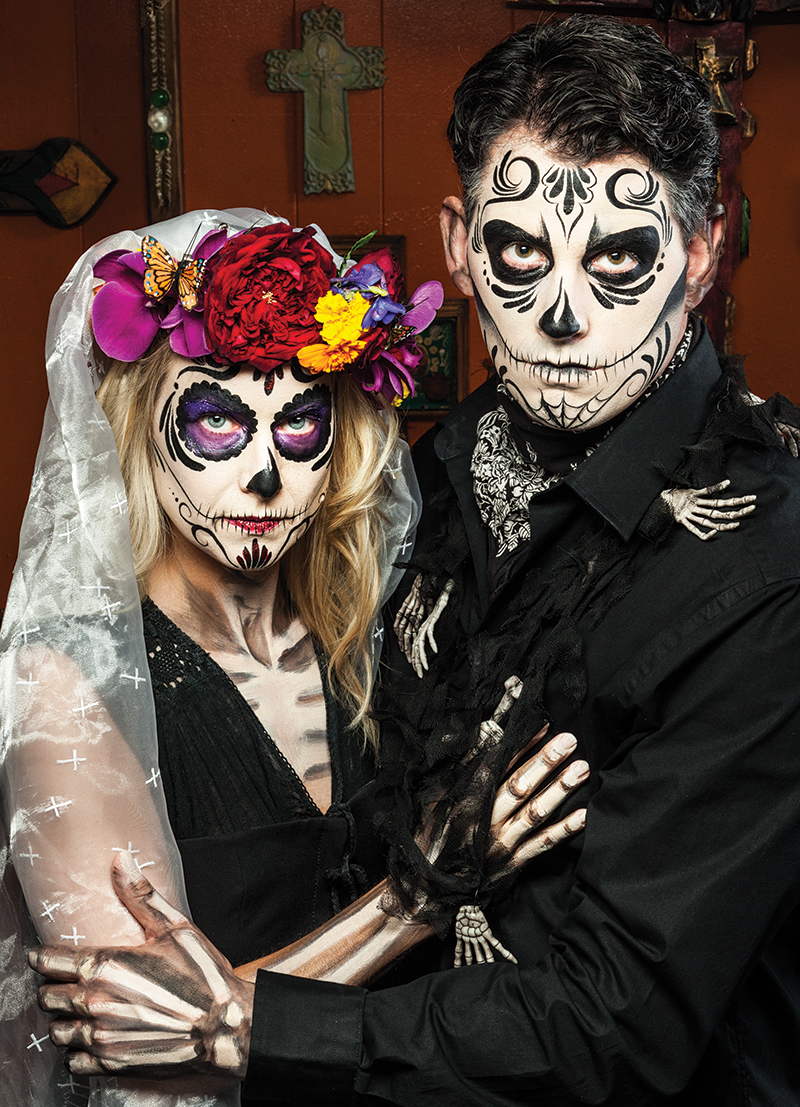
Face and body painting by Nicole Alderman, nicbodyartla@gmail.com; Models: Michael and Deanna Porter; Styling assistant: Kathy Kaloper
As almost anyone who lives in LA knows, Día de los Muertos, or Day of the Dead, is an integral part of Latin culture. The multi-day celebration of life, which kicks off in late October, is also a time to pay reverence to those who have passed.
The deceased are remembered in a joyous way, even though the specter of death looms in the traditional art and customs. Eerie and artful “Calaca” skeletons, “Calavera” sugar skulls, flowers, traditional food, music and stories of loved ones blend the two worlds of the living and the dead in festive fashion.
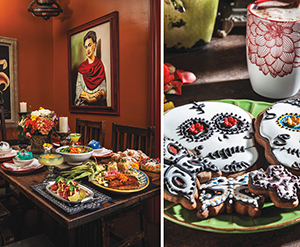
Key Facts
The ritual remembrance of the departed may have some similarities to Halloween, yet the traditions differ. Día de los Muertos is a sacred holiday that originated in Mexico and is a blending of indigenous Native American pre-Colombian rituals, with the traditions of Spanish Roman Catholics.
Celebrate
Rituals start in the home and move to the gravesite in order to be closest to the souls of the dearly departed. Seasoned celebrants praise the popular Hollywood Forever event; there are also annual celebrations in Long Beach, San Pedro, San Diego and San Francisco.
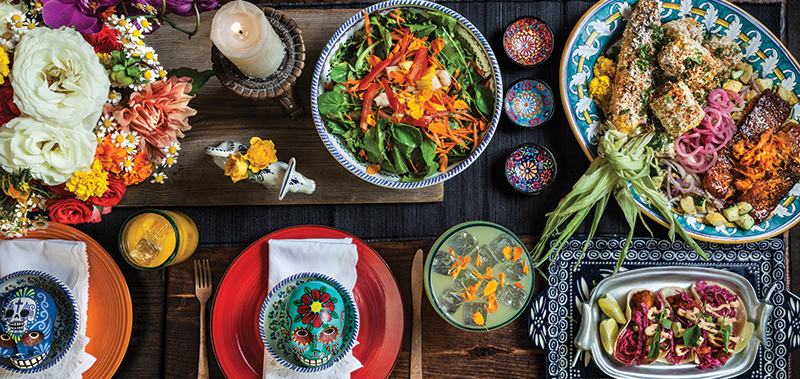
Food
And now perhaps the best part of any holiday: the food. If you are hosting a Día de los Meurtos celebration, be sure to have pan de muertos (bread of the dead), decorated cookies (think sugar skulls), champurrado, candied pumpkin, elotes (street-style corn), tamales and mole. Pick one or two recipes to try out, as many of the traditional foods can be challenging to make from scratch. Restaurants and ethnic bakeries are great resources (and time-savers).
Flowers
Marigolds are the traditional flowers of the holiday, and they are used to decorate the altars. Floral artist Jenny Barker of Magical Blooms suggests using wildflowers and dahlias, which are native to Mexico, for an authentic look.
Altar
Great care is taken in building an altar, which represents four elements of creation: earth, fire, wind and water. The levels (typically three to seven) represent the stages the spirits go through to reach their final destination. Brightly colored and aromatic marigolds, often crafted in a floral arch, represent the bridge between the two worlds—earthly life and death.
Sugar Skull Look
Face and body painting is an intricate yet fun part of the celebration. YouTube, Pinterest and Instagram have some great tutorials. Consider hiring a skilled body or makeup artist for a standout look or renting a costume. Local fabric and craft stores are great resources for accessories such as the cross veil, butterflies and bone garland.
